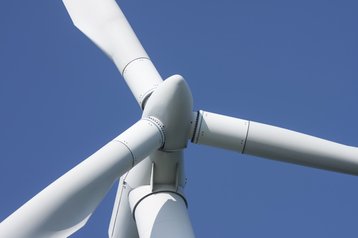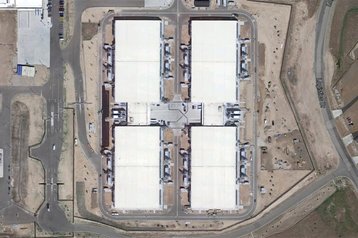Microsoft has nearly doubled its support for wind power, funding 237MW of capacity for its Cheyenne Wyoming site. At the same time, it has taken the unusual step of making its backup generators available to the local power grid.
Microsoft has a contract fo fund the 178MW Bloom wind farm in Kansas, and will make up the rest of its requirements by paying for capacity at two other projects. This takes the company to 500MW of wind power in the US, according to a blog post by Microsoft president and general counsel Brad Smith, which also describes the plan to share the Cheyenne site’s generators.
Funding wind
“We’ve structured the purchase and partnered with the local utility in novel ways to make it easier and more affordable for cities and states to move to a cleaner energy grid,” said Smith. “And we’re making our datacenter’s backup generators available to the local grid, boosting reliability while keeping prices low for all ratepayers.”
Microsoft’s data centers currently get about 44 percent of their energy from renewable sources, and has promised to take that to 50 percent by 2018.
Microsoft is buying 178MW of power from Capital Power’s Bloom Wind Project in Kansas, using a new contract recently set up by Allianz Risk Transfer (ART) to fund wind projects. The rest of the 237MW is provided by contracts with local utility Black Hills’ 59MW Happy Jack and Silver Sage wind farms in Wyoming.
The ART contract lowers costs and reduces risks, said Smith: ”We hope to help serve as a model that spurs other markets to accelerate the rate at which wind and solar energy projects come online.”
Putting backup generators to work
Under another deal, Black Hills Energy can use Microsoft’s backup generators at its Cheyenne site, in North Range Business Park, as a secondary resource for the local grid, thus avoiding the need to build a new power plant to handle peak demands. The generators run on natural gas, which is better than diesel, Smith points out.
“Traditionally, when presented with a constraint on the system relating to reliability, load growth or the introduction of intermittent generation, a utility had one option: build new infrastructure, such as new substations, power plants or transmission lines. This ordinarily means higher costs to ratepayers,” said Smith. ”In this case, Black Hills Energy was faced with the potential need to build a new plant in Cheyenne.”
Many other data centers have fought shy of such a move, feeling that their diesels should be exclusively available to them for emergencies, but Microsoft sees it as a way to help: ”This is a small step toward a future where other customer-sited resources may help make the grid more efficient, reliable and capable of integrating intermittent energy sources like wind and solar,” said Smith.
Microsoft recently opened a small prototype data center near Cheyenne, powered entirely by biogas. The 200kW site, at the Dry Creek Waste Water Treatment plant about 10 miles from the data center in North Range Business Park


